How To Repair Startup Disk Mac
How to repair a Mac disk with Deejay Utility
Use the First Aid feature of Disk Utility to detect and repair disk errors.
Deejay Utility can observe and repair errors related to the formatting and directory construction of a Mac disk. Errors can atomic number 82 to unexpected behavior when using your Mac, and significant errors might fifty-fifty forestall your Mac from starting upwardly completely.
Before proceeding, make certain that you have a electric current backup of your Mac, in case yous need to recover damaged files or Disk Utility finds errors that it can't repair.
Open Disk Utility
In full general, you lot tin can just open Disk Utility from the Utilities folder of your Applications folder. However, if your Mac doesn't start up all the mode, or you desire to repair the disk your Mac starts upwards from, open Disk Utility from macOS Recovery:
- Determine whether you're using a Mac with Apple silicon, then follow the appropriate steps:
- Apple tree silicon: Turn on your Mac and go along to press and hold the power push until you see the startup options window. Click the gear icon labeled Options, then click Go on.
- Intel processor: Turn on your Mac, then immediately press and agree these two keys until you run across an Apple logo or other image: Command (⌘) and R.
- You lot may be asked to select a user you lot know the password for. Select the user, and then click Next and enter their administrator password.
- From the utilities window in macOS Recovery, select Deejay Utility and click Go along.
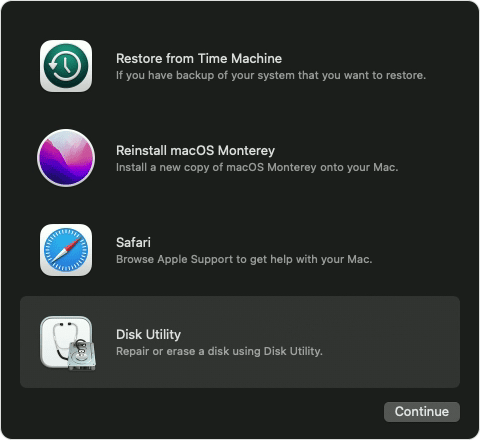
Select your deejay in Deejay Utility
Choose View > Show All Devices (if available) from the menu bar or toolbar in Disk Utility.
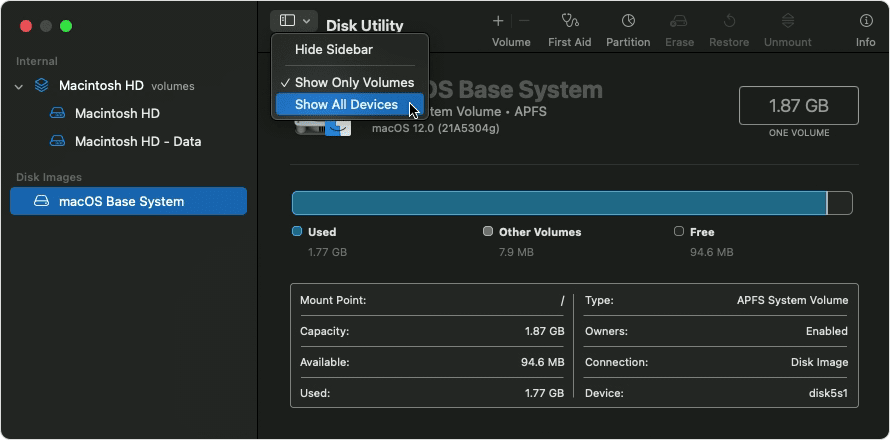
The sidebar in Disk Utility should at present show each available deejay or other storage device, beginning with your startup disk. And beneath each disk you should meet any containers and volumes on that disk. Don't meet your disk?
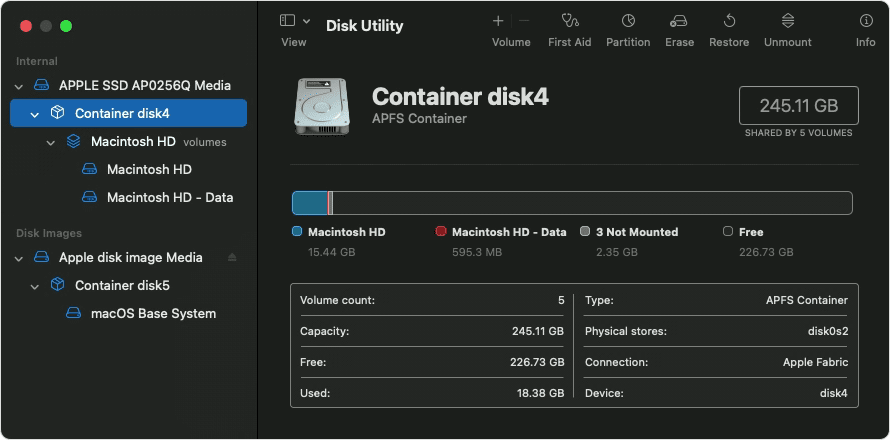
In this example, the startup disk (Apple tree SSD) has one container and two volumes (Macintosh Hard disk, Macintosh Hard disk drive - Data). Your disk might not have a container, and it might take a different number of volumes.
Repair volumes, so containers, and so disks
For each disk that you're repairing, first by selecting the last volume on that disk, then click the Start Assist button![]() or tab.
or tab.
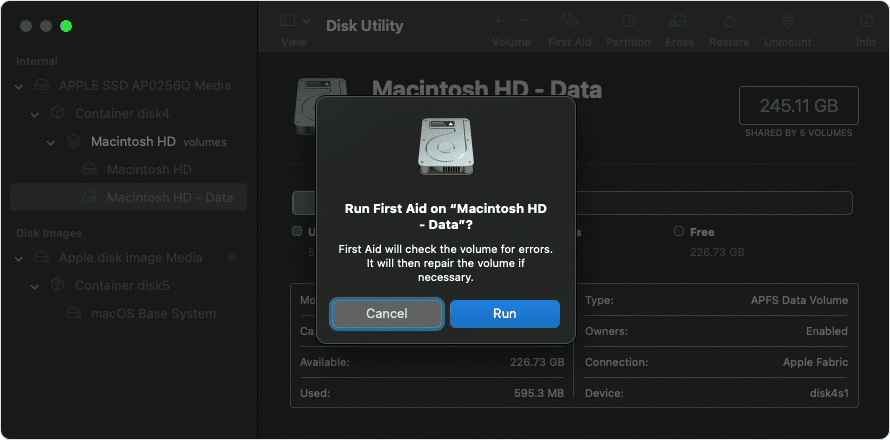
In this example, the last volume on the disk is Macintosh HD - Data.
Click Run to begin checking the selected volume for errors.
- If there is no Run button, click the Repair Deejay button instead.
- If the push is dimmed and you can't click it, skip this step for the disk, container, or volume you selected.
- If you're asked for a password to unlock the disk, enter your administrator countersign.
Afterward Disk Utility is done checking the volume, select the next particular above it in the sidebar, and then run First Aid again. Go on moving up the listing, running First Aid for each volume on the disk, and so each container on the disk, so finally the deejay itself.
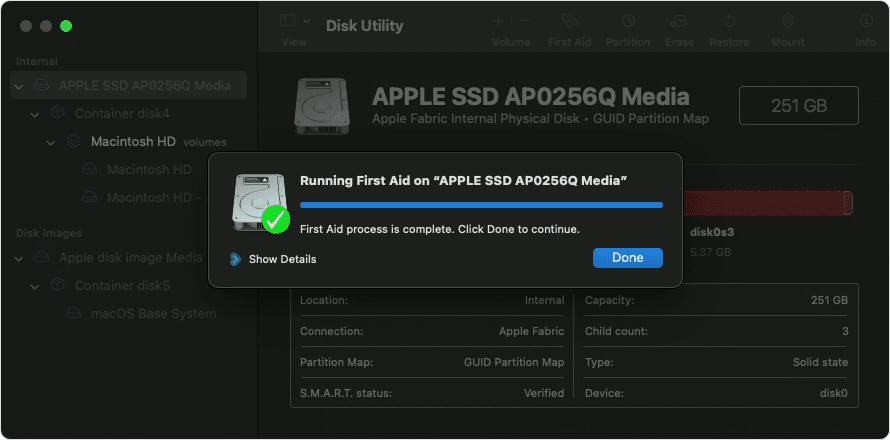
The guild of repair in this case was Macintosh Hard disk drive - Information, then Macintosh HD, then Container disk4, then APPLE SSD.
When done, quit Disk Utility. If you used Disk Utility from macOS Recovery, you can now restart your Mac: choose Apple bill of fare > Restart.
If Deejay Utility found errors that it tin't repair
If your disk doesn't appear in Disk Utility
If Disk Utility can't meet your deejay, it also can't see any containers or volumes on that deejay. In that case, follow these steps:
- Shut down your Mac, then unplug all nonessential devices from your Mac.
- If yous're repairing an external drive, make sure that it's continued directly to your Mac using a cable that you know is good. Then turn the bulldoze off and back on.
- If your deejay even so doesn't appear in Disk Utility, your Mac might need service. If you need help, delight contact Apple tree Support.
Published Date:
Source: https://support.apple.com/en-us/HT210898

0 Response to "How To Repair Startup Disk Mac"
Post a Comment